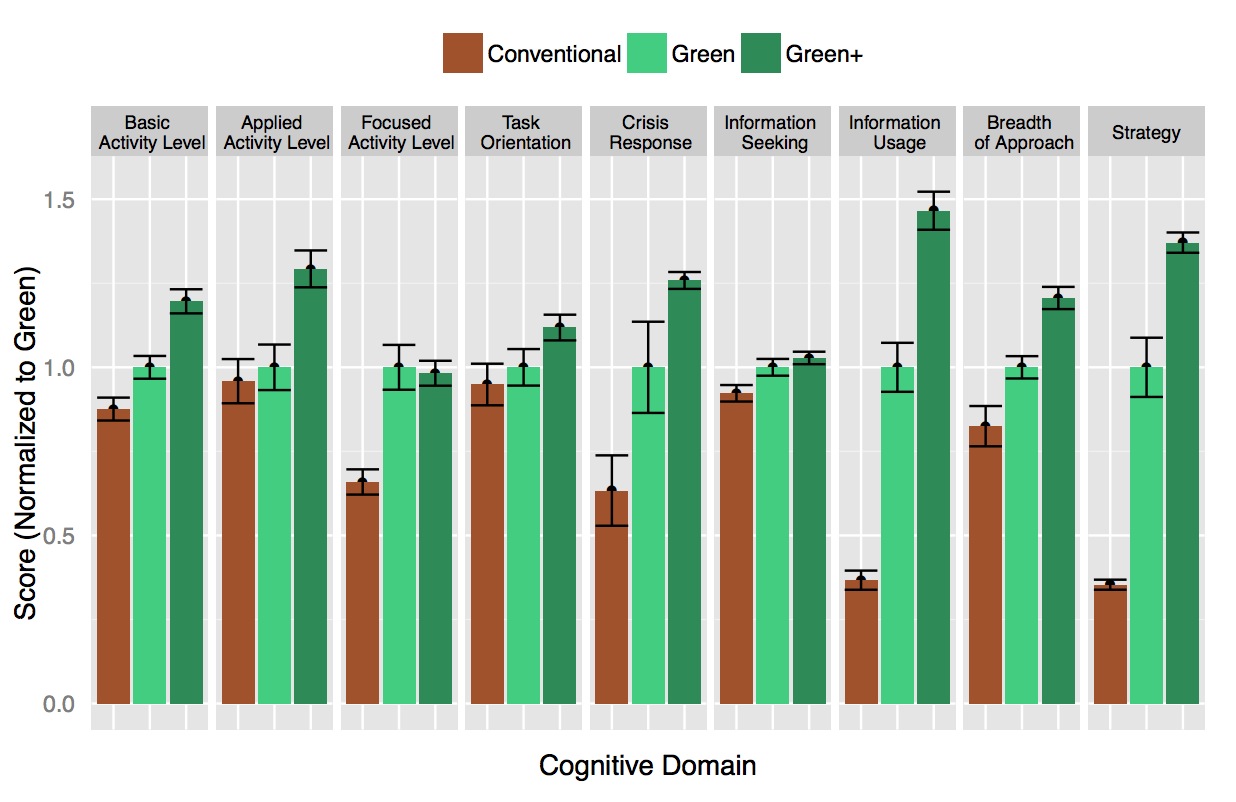NATIONAL INSTITUTE OF ENVIRONMENTAL HEALTH SCIENCES
Introduction
The increasing cost of energy in the 1970s led to a change in building practices throughout the United States, as buildings were increasingly constructed to be airtight and energy efficient. This is reflected in decreasing air exchange rates in homes and buildings. For homes, beginning around this time period, typical air exchange rates began decreasing from approximately 1 air change per hour (ACH) to approximately 0.5 ACH (Chan et al. 2003; Hodgson et al. 2000; ASHRAE 2013). Homes built in the past decade are designed to be even more energy-efficient and therefore can be even tighter (0.1 – 0.2 ACH; Allen et al. 2012; ASHRAE 2013). The 100+ year story of ventilation in buildings is more complicated, and neatly summarized recently by Persily (2015). Persily describes the original ASHRAE 62 standard, issued in 1973, and the many subsequent iterations (e.g. ASHRAE 62.1 applies to commercial buildings), demonstrating the evolving nature of our understanding regarding the relationship between ventilation rate and acceptable indoor air quality. Similar to the story with homes, commercial ventilation requirements were lowered in the early 1980’s, largely as an energy-conservation measure (Persily 2015).
With these design changes comes the potential for negative consequences to indoor environmental quality (IEQ), as decreased ventilation can lead to increased concentration of indoor pollutants. Building-related illnesses and sick building syndrome (SBS) were first reported in the 1980s as ventilation rates decreased (Riesenberg and Arehart-Treichel 1986), with significant annual costs and productivity losses due to health symptoms attributable to the indoor environment (Fisk et al. 1997). A few factors of the indoor and work environment have been found to be associated with occupant health. These include environmental measures, such as humidity; building factors, such as ventilation rate; workspace factors, such as the presence of chemical-emitting materials; and personal factors, such as job stress, allergies, and gender (Mendell 1993; Wargocki et al. 2000; Bornehag et al. 2005; Hedge 2009; Hedge and Gaygen 2010; Nishihara 2014).
The IEQ problems that arose from conventional buildings with a tight envelope contributed to the advent of sustainable design or “green” building rating systems (e.g. U.S. Green Building Council’s Leadership in Energy and Environmental Design (LEED®)). These rating systems aim to reduce the environmental footprint of buildings and improve occupant health by providing design credits to new and existing buildings for adopting green design, operation, and maintenance. Different levels of ratings for the building are then awarded based on the number of acquired credits (e.g., silver, gold, platinum) (USGBC 2014). Many design credits are aimed at energy efficiency and environmental performance, but also include guidelines for improving ventilation and filtration, using low-emitting materials, controlling indoor chemical and pollutant sources, improving thermal and lighting conditions, and offering daylight views to building occupants (USGBC 2014). Compared to conventional buildings, environmental measurements in green buildings show lower concentrations of several key pollutants including particles, nitrogen dioxide, VOCs, and allergens (Colton et al. 2014; Jacobs et al. 2014; Noris et al. 2013). However, these reductions generally did not extend to CO2 or air exchange rate, demonstrating the influence of energy efficiency on green building operation and design. Green buildings were associated with improved IEQ, and have been associated with reductions in self-reported symptoms in people inhabiting the buildings, and with improved productivity in home, school, and office settings (Colton et al. 2014; NRC 2007; Singh et al. 2010). However, an important limitation of these studies is the reliance on subjective outcome measures, such as surveys, that have the potential for bias because participants are aware of their status (i.e. green or control). To our knowledge, no studies have been conducted in green buildings to date where participants are blinded to their building condition (Allen et al. 2015).
We designed this study to objectively quantify the impact of indoor environmental on higher order cognitive function, a driver of real-world productivity in office workers. We simulated low VOC (“Green”) and high VOC (“Conventional”) building conditions, both at the ASHRAE standard ventilation rate. Recognizing that technological advances in mechanical systems opens the possibility of increasing ventilation rates without sacrificing energy efficiency, we also tested another building condition that introduced higher rates of ventilation to the Green building condition. This condition is labeled Green+. Last, we were motivated by the recent findings by Satish et al. that CO2 may be a direct pollutant, and not just an indicator of ventilation (2012), and therefore estimated associations of full workday exposure to CO2 on cognitive function holding all other variables constant.
…
Conclusion
Office workers had significantly improved cognitive function scores when working in Green and Green+ environments compared to a Conventional one. Exposure to CO2 andVOCs at levels found in Conventional office buildings was associated with lower cognitive scores compared to levels in a Green building. Using low emitting materials, which is common practice in Green buildings, reduces in-officeVOC exposures. Increasing the supply of outdoor air not only lowers exposures to CO2 andVOCs, but also exposure to other indoor contaminants. Green building design that optimizes employee productivity and energy usage will require adopting energy efficient systems and informed operating practices to maximize the benefit to human health while minimizing energy consumption. This study was designed to reflect indoor office environments in which large numbers of the population work every day. These exposures should be investigated in other indoor environments, such as homes, schools and airplanes, where decrements in cognitive function and decision-making could have significant impacts on productivity, learning and safety.
About the National Institute of Environmental Health Sciences
www.niehs.nih.gov
The National Institute of Environmental Health Sciences (NIEHS), located in Research Triangle Park, North Carolina, is one of 27 research institutes and centers that comprise the National Institutes of Health (NIH), U.S. Department of Health and Human Services (DHHS). The mission of the NIEHS is to discover how the environment affects people in order to promote healthier lives.
Tags: Cognitive Function, Green, Green Buildings, Health, National Institute of Environmental Health Sciences, Public Health, safety







 RSS Feed
RSS Feed